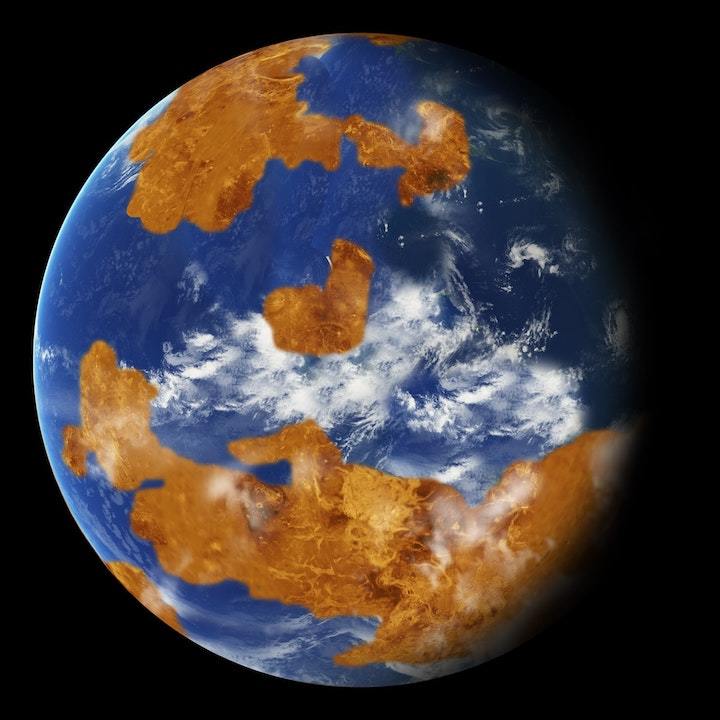17.04.2018
Climate models show exoplanets like Venus could hold oceans under the right conditions. Richard A. Lovett reports.

Venus-like exoplanets might not be super-heated hothouses, say scientists. Evidence is mounting that even Venus itself could have supported liquid oceans as recently as 750 million years ago, says Michael Way, an atmospheric scientist at NASA’s Goddard Institute for Space Studies in New York City.
Venus is dry now, but based on isotope ratios of hydrogen in its present atmosphere, scientists can calculate how much water it once had, Way said at a NASA-sponsored symposium called “Environments of Terrestrial Planets Under the Young Sun: Seeds of Biomolecules,” in Greenbelt, Maryland.
Based on these ratios, it appears that Venus has lost at least 99.9 percent of its water, which means it might once have had enough to cover it to a depth of several hundred meters. Exactly how much is a bit vague (estimates vary by a factor of a hundred) but either way, Way says, there would have been enough to form sizeable oceans or at least lakes.
Assuming that the early atmosphere of Venus was similar to Earth’s (not unlikely, because the two planets are so close in size and composition that they are often viewed as twins), he says, it’s possible to use climate models to calculate the Venusian climate as the Sun steadily warmed and Venus moved from receiving about 35 percent more solar energy than the modern Earth to 90 percent more.
The result, Way says, is surprising: even if Venus started with very little water, it would not only have retained it but would have been quite temperate, even as recently as 715 million years ago.
A number of factors appear to play into this remarkable result. One is that Venus is rotating slowly, with a Venusian day lasting nearly as long as 117 Earth days. This slow rotation would have allowed a younger, potentially habitable, Venus to build up a layer of clouds on its sunward side, reflecting a lot of solar energy back into space. On a faster rotating Venus-like world, the clouds wouldn’t form until afternoon, when the sun is no longer high enough to block as much solar energy.
What this means for exoplanets is that the habitability of Venus-like worlds close to their suns might depend on their rotation rates – something that exoplanet hunters can’t yet determine.
“It will be ten to fifteen years before we get rotation rate data on these exoplanets,” Way says, “but it will probably tell us a lot.”
His model also assumes that the early Venus (and similar exoplanets) had some form of tectonics that, through rock-weathering processes, could recycle volcano-produced carbon dioxide from the atmosphere back into the interior. Otherwise, the planet-warming gas would build up to a point where all of the water evaporates and the planet goes into a superheated state like modern Venus, where surface temperatures are on the order of 450°C.
In fact, Way suggests, the end of Venusian habitability may have been caused not by the slow warming of the Sun, but by massive volcanism, which appears to have covered 80-85 percent of the Venusian surface about 750 million years ago, in the process releasing tremendous amounts of carbon dioxide. “The planet can handle increased [solar energy],” he says. “Probably something else happened, and it probably has to do with the resurfacing events.”
Matthew Weller, a planetary scientist at the University of Texas at Austin, who has studied Venusian tectonics, agrees. “The picture that is emerging between Michael’s stuff (atmosphere) and my stuff (interior-to-atmosphere) is that the potential for liquid water and habitability depends on far more than just the distance to the host star,” he says.
Figuring all of this out for exoplanets, he adds, means paying more attention to Venus. “It’s the forgotten planet," he says.
Quelle: COSMOS
